
When people advocate for keeping the United Nations (UN) out of the United States, they often overlook the fact that the UN is already present and has subtly integrated itself into various levels of our government, both federal and state. This infiltration is largely facilitated by the narrative of the climate change crisis, which some argue was constructed in the 1970s by wealthy members of the Club of Rome. Their goal has been to gain control over global governance and advance the concept of a one-world government through public-private partnerships. And they make it sound so urgent.
The California 30x30 initiative has been framed as a groundbreaking effort to save the state’s natural wonders by protecting 30% of its land and coastal waters by 2030. It’s marketed as a way to combat climate change, preserve biodiversity, and ensure future generations can enjoy California’s stunning landscapes. Who wouldn’t want to protect nature? But while it paints a pretty picture of saving the planet, there’s a deeper question at play: is this really about preserving nature for everyone, or is it just another way for the elite to expand their control and limit access for the rest of us?
On the surface, they tell us the initiative won’t completely restrict people from accessing these newly protected areas. We’re reassured that public access will still be allowed, and the idea is to promote responsible recreation while preserving the land. Sounds reasonable, right? But how long before those restrictions tighten, and the places we once roamed freely are suddenly off-limits? After all, "conservation" often begins with minor limitations that slowly become outright bans. Will we wake up one day to find that the beautiful landscapes we love are no longer accessible to us, all in the name of "protecting" them?
The initiative took off following Executive Order N-82-20, signed by California Governor Gavin Newsom on November 3, 2020 when the world and California was focused on (distracted by) the COVID-19 pandemic, lockdowns, job loss, and mask mandates, and experimental vaccines. This order committed California to the ambitious conservation goal of protecting 30% of its land and coastal waters by 2030. Newsom's decision was heavily influenced by a coalition of environmental groups, including The Nature Conservancy, the Sierra Club, and Conservation International, alongside powerful philanthropic organizations like the Bezos Earth Fund. These entities have been relentless in lobbying for increased conservation measures, framing them as essential to combating climate change and preserving biodiversity. Newsom has cited the initiative as part of California's broader climate strategy, aiming to enhance the state’s resilience to climate impacts, but the question remains: who truly benefits from this initiative?
The 30x30 California Initiative also present the restoration of tribal lands to Indigenous communities as a generous act, but upon closer examination, the actual amount of land being returned is quite minimal. This situation creates a narrative where any skepticism about these measures can be framed as racism, effectively silencing dissent. This strategy has been perceived as a clever tactic by the UN and figures like Gavin Newsom, as it deflects criticism while maintaining the appearance of addressing historical injustices.
Can Indigenous communities genuinely trust the government, considering the historical injustices they have faced? It would be wise for them to carefully scrutinize the fine print of any agreements they enter into. Many believe that these initiatives may be more about using these communities as a shield against criticism rather than genuinely addressing their concerns. This perception raises serious questions about the motivations behind such policies and whether they truly serve the interests of Indigenous peoples.
If we look at who’s pushing this initiative, a familiar pattern emerges. It’s the same class of elites who have long driven the narrative of environmental apocalypse. The Club of Rome’s Limits to Growth report warned decades ago that the world was running out of resources and we were on the brink of disaster. Their message was clear: humanity needed to scale back, but, of course, they meant everyone else—not themselves. These same power brokers, with their endless wealth, are the ones pulling the strings behind efforts like the 30x30 initiative, urging the rest of us to sacrifice while they live large.
The MIT "End of Civilization" Prediction
In the early 1970s, a group of MIT scientists, commissioned by the Club of Rome, released the World3 model, predicting that civilization would collapse by the mid-21st century unless humanity changed course. According to this model, resource depletion, population growth, and environmental degradat…
The Elite Players in the Game
Is California being transformed into a playground for the rich under the guise of environmentalism? Let’s not forget about figures like Al Gore, who’s deeply connected to the environmental movement and has been a climate change advocate for decades. His Climate Reality Project and influential documentary "An Inconvenient Truth" (this project was co-produced by billionaire Jeff Skoll’s film company, Participant Media, which is also known for producing the film Contagion) have shaped public discourse on climate change, while his partnerships with major organizations like the Sierra Club and The Nature Conservancy have helped drive advocacy for initiatives like 30x30.
Gore is a regular speaker at elite gatherings, including the World Economic Forum (WEF), and maintains close ties with influential billionaires like Laurence Rockefeller and organizations like the Rockefeller Foundation, which are heavily involved in global environmental agendas.
Jeff Bezos, founder of Amazon and the Bezos Earth Fund, is a significant player in the 30x30 initiative. The fund has pledged substantial resources toward conservation projects that align with the goals of protecting land and promoting sustainability. Bezos has positioned himself as a leader in the fight against climate change, promoting initiatives that aim to restore ecosystems, reduce emissions, and advance sustainable practices.
He has been vocal about the need for urgent action to combat climate change and has backed organizations that support these goals, such as The Nature Conservancy and Conservation International. At COP26, Bezos announced a commitment of $2 billion to support food systems and restore nature, emphasizing the urgent need for global action while leveraging his wealth and influence to shape conservation efforts.
Jeff Bezos has aligned himself with the 30x30 initiative, an international agenda orchestrated by a few wealthy elites under the guise of climate change to control at least 30% of the world's lands and waters by 2030. This so-called solution to a biodiversity crisis is framed as a noble cause, yet it poses a sinister threat by potentially allowing a small, privileged class to dictate how natural resources are managed, undermining local communities and their food sources.
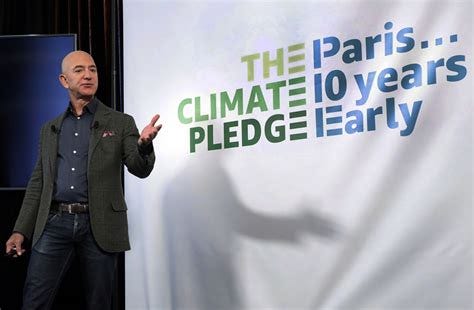
The High Ambition Coalition for Nature and People, which is entangled in this agenda, operates under the auspices of the United Nations' Agenda 2030. This coalition exemplifies a broader, insidious trend where environmental protection rhetoric is weaponized to enforce top-down control over land and resources. Such initiatives disguise their true nature as they impose restrictions that disproportionately impact the working class while enriching the already powerful. Under the guise of saving the planet, these elites seek to consolidate their influence and reshape society to suit their interests, leaving ordinary people to grapple with the consequences of policies that prioritize their control over genuine environmental stewardship.
Additionally, Bezos is known to support other environmental causes that fall in line with the 30x30 objectives, including reforestation projects and sustainable agriculture initiatives, which often tie back to his corporate interests. Critics argue that his involvement raises concerns about corporate influence in environmental policy, especially as he can leverage his financial resources to direct the focus of “conservation” initiatives.

Bezos has called the loss of Earth’s forests “a profound and urgent danger to us all.” Let’s not ignore the irony that individuals like Bezos, with their massive corporations and global business interests, engage in practices that likely cause more harm to the planet and ecosystems than any middle-class or low-income individual could ever do. While Bezos champions environmental protection and conservation, his business practices often contradict this narrative. Amazon promotes a culture of instant gratification and hyper-consumerism, which leads to increased production, transportation, and waste. The company's practices encourage a throwaway culture, which is at odds with sustainability efforts. The article "Amazon's Climate Pollution is Getting Way Worse" from The Verge highlights the stark contradiction between Amazon's environmental claims and its actual impact on climate change.
Amazon's greenhouse gas emissions ballooned big time last year despite the company's efforts to sell itself as a leader in climate action. Its carbon dioxide emissions grew an eye-popping 18 percent in 2021 compared to 2020, according to its latest sustainability report.
Amazon generated 71.54 million metric tons of carbon dioxide equivalent last year, about as much pollution as 180 gas-fired power plants might pump out annually. This is the second year in a row that Amazon's climate pollution has grown by double digits since it made a splashy climate pledge and started reporting its emissions publicly in 2019. Comparing that year to 2021, the company's CO2 pollution has actually grown a whopping 40 percent.

For instance, Amazon, under his leadership, has faced criticism for its significant carbon footprint due to the sheer scale of its logistics and delivery operations. The company’s reliance on extensive packaging and single-use plastics contributes to considerable waste. Furthermore, Amazon's rapid delivery model encourages a culture of consumerism that exacerbates environmental degradation. Despite pledging to achieve carbon neutrality by 2040 and investing in renewable energy, the company’s aggressive expansion plans, including the construction of numerous fulfillment centers, often lead to habitat destruction and increased emissions.
Bezos’s investments in fossil fuel projects, such as the ownership of oil drilling sites through personal investments and his space venture projects raise questions about his commitment to sustainability. Through his aerospace company, Blue Origin, Bezos has invested in space travel and exploration, which has raised concerns about the environmental impact of his phallic shaped rocket launches and the long-term sustainability of such endeavors.
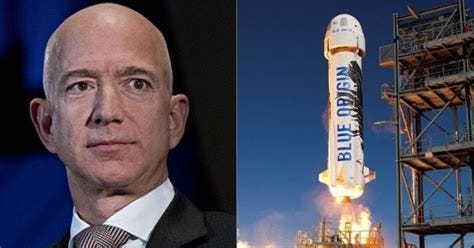
Some men buy huge diesel trucks to compensate for their shortcomings. What does this say about Bezos (who literally looks like Dr. Evil)?

His ownership of multiple mansions, luxury yachts, and private jets highlights a lifestyle that relies heavily on resource consumption and carbon emissions, further undermining his claims of commitment to sustainability. Bezos has made political contributions to candidates and organizations that may not prioritize environmental policies. His influence in the political realm can help shape legislation that benefits corporate interests over environmental protections.
This dissonance between his environmental advocacy and the operations of his companies highlights a broader issue within the elite class, where the push for environmental initiatives can sometimes serve to distract from their own environmentally detrimental practices.

And much like the California 30x30 Initiative, Hawaii too also has a 30x30 Initiative. The Hawaii 30x30 Initiative, launched in 2016 by Governor David Ige, aims to effectively manage 30% of Hawaii's nearshore waters by 2030. MARE, the initiative's technological partner, is utilizing blue technology to aid in these conservation efforts. By applying advanced tools and methodologies, MARE aims to improve monitoring, management, and protection of marine ecosystems, thus ensuring the effectiveness of the 30x30 goals in Hawaii. Can we really trust that the information being obtained by groups like MARE who are being funded by groups trying to push climate change and Agenda 2030 can be trusted?
This initiative seeks to “enhance marine biodiversity” and promote “sustainable fishing” practices while engaging local communities in the management process. It is part of broader efforts to protect Hawaii's unique marine ecosystems and involves partnerships with various organizations to ensure “effective implementation and support” because…climate change.
Also like California, Hawaii really want to include the indigenous people of Hawaii in the 30x30 initiative. But again, can these organizations or the government truly be trusted?
The Timeline and Context of the 30x30 Initiative
The 30x30 initiative seems to have began in 2016 in Hawaii, aiming to protect marine areas and biodiversity. However, its global push accelerated during the COVID-19 pandemic in 2020 with Newsom and California signing on, a time when many were preoccupied with disputes over the origins of the virus, mask mandates, and vaccination debates.
This distraction allowed those in power to quietly implement sweeping environmental policies that often went unchallenged. The initiative gained formal recognition in 2020 when the High Ambition Coalition for Nature and People was formed, quickly attracting international support. By January 2021, over 50 nations had endorsed it, and that number rose to more than 100 by October 2022.
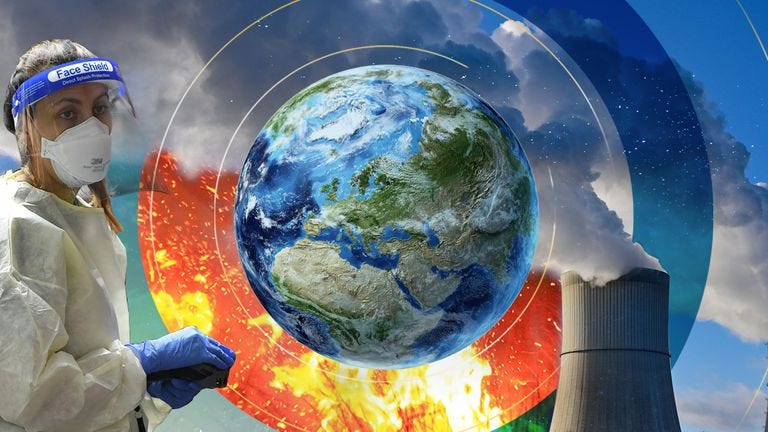
The initiative was solidified at the COP15 meeting in December 2022, where it was incorporated into the global biodiversity targets. Notably, the European Union and Canada have embraced these goals, with the EU aiming to protect 30% of its territory by 2030.

Shortly after Joe Biden took office in the United States, he issued an executive order in January 2021, directing federal efforts to conserve at least 30% of U.S. lands and waters, known as the 30 by 30 plan, by the same deadline of 2030. The Department of Interior's May 6 2021 report, Conserving and Restoring America the Beautiful, revealed that activities like farming, grazing, and logging could still be considered conservation efforts if managed with “sustainability” in mind. What could be wrong with that, right?

The 30x30 Initiative: A Threat to Democracy
The 30x30 initiative, which aims to designate 30% of the Earth's land and ocean as protected areas by 2030, is being exploited by politicians like California Governor Gavin Newsom and Hawaii Governor David Ige to undermine local governance and enforce global control over resources. Presented under the guise of environmental conservation, this initiative advances a dangerous agenda that encroaches on the rights of indigenous communities and local populations. By positioning themselves as champions of a noble cause, these leaders prioritize their interests and those of powerful corporations at the expense of everyday citizens.

The COVID-19 pandemic has acted as a strategic distraction, allowing these actors to implement controversial measures with minimal public scrutiny. While society has been absorbed in debates over the origins of COVID and vaccine efficacy, significant changes to governance and resource management have often gone unnoticed.

Klaus Schwab's assertion that governments should leverage crises for transformative change has become a troubling reality, facilitating actions that directly undermine democracy and erode individual freedoms.
With over 100 countries adopting this framework, it is critical to recognize and address these initiatives. The push for 30x30 is not merely an environmental policy; it represents a concerted effort to redefine power structures and control over land and resources, ultimately threatening the democratic rights of citizens worldwide. This situation warrants urgent attention and action to protect democratic processes and community rights against encroaching authoritarianism disguised as environmental stewardship.

Accusations of Green Colonialism
The 30x30 initiative has been criticized for promoting a form of "green colonialism" or "green grabbing." On November 30, 2022, a group of NGOs, including Amnesty International, Minority Rights Group International, and Rainforest Foundation UK, expressed concerns over potential violations of human and indigenous rights that could arise from the plan. Critics argue that the initiative appropriates indigenous lands under the guise of biodiversity conservation. The Union of British Columbia Indian Chiefs even labeled the plan as having "all the hallmarks of green colonialism," highlighting its disregard for indigenous titles and rights.

Globalists and the Green Agenda
Other influential figures connected to these environmental efforts, who belong to globalist networks or have ties to groups like the Club of Rome, include Henry M. Paulson Jr., the former U.S. Treasury Secretary and co-chair of The Nature Conservancy’s Asia Pacific Council, who also has ties to the Council on Foreign Relations. Mark Tercek, former CEO of The Nature Conservancy and a former partner at Goldman Sachs, has been heavily involved in green investment strategies that often align with elite financial interests. Peter Seligmann, founder of Conservation International, has backing from corporate giants and influential institutions such as the World Bank and the United Nations Environmental Program.
Meanwhile, Laurence D. Fink, CEO of BlackRock, the world’s largest asset manager, has been instrumental in promoting environmental, social, and governance (ESG) standards, which are closely linked to conservation financing. These standards encourage corporations to adopt sustainable practices but often lead to increased costs that the average citizen must bear.
Bill Gates has also been heavily involved in environmental initiatives, advocating for innovations in renewable energy and agriculture while investing in technology that aligns with sustainable practices. His Energy Ventures fund has directed billions toward green technologies, often with an emphasis on large-scale solutions that fit corporate interests.

The Real Agenda
Together, these individuals and organizations help drive initiatives like Hawaii’s and California’s 30x30 Initiatives, and critics argue that while these efforts claim to protect the environment, they often serve to consolidate control over land and resources in the hands of the wealthy and powerful, restricting public access while benefiting elite interests. The reality is that we’re living in a world where those with wealth and power control the narrative. They tell us the sky is falling, that we need to act now to save the planet, and that initiatives like 30x30 are the answer. But in the process, they’re quietly securing more land, more control, and more freedom for themselves while the rest of us are left scrambling to survive elsewhere.
As more states consider similar initiatives to protect natural resources, we must critically examine who stands to benefit. Do other beautiful states like California have initiatives like this? Yes, states across the U.S. and countries around the world are increasingly adopting similar conservation goals, often in conjunction with international agreements aimed at reducing carbon emissions and promoting sustainability. Initiatives like 30x30 are also gaining traction in states like Colorado, New York, and Washington, reflecting a broader trend toward conservation that aligns with the goals of international bodies like the United Nations and various climate accords.
However, the question remains: will these initiatives genuinely benefit the public and the environment, or will they simply serve as another means for the elite to restrict access and consolidate power? What could possibly go wrong with letting them call the shots, right?
This group of criminals is intensifying their efforts to gain control through the fraudulent climate change narrative, using the COVID-19 pandemic as another cover. To this day, many people are still unclear about how the pandemic started and what really happened, and those tasked with investigating it may very well be complicit in the whole scheme.
One thing is certain: if the 99% don’t wake up and take action now, we’re going to be in serious trouble. These criminals want to reduce carbon, but what they’re really not saying is that the carbon they want to reduce is us, and they’re getting close to achieving their goal. With just five years left to fulfill their agenda, the time for the 99% to act is now.









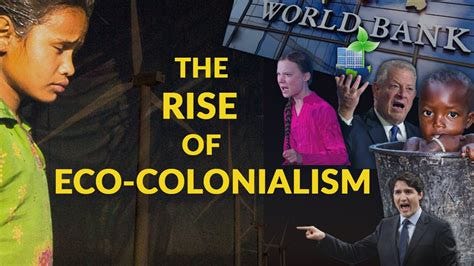
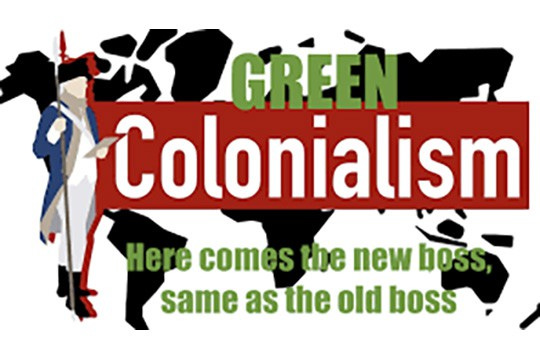

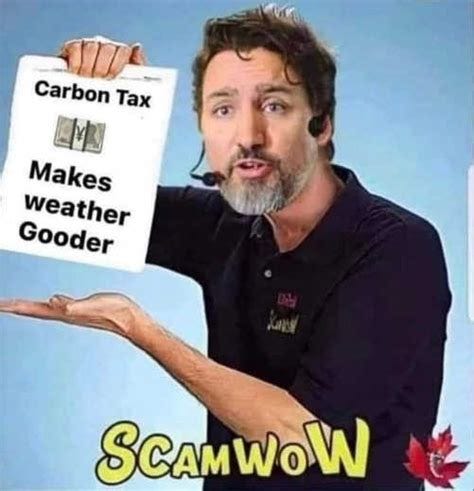

Where is the utter fury emoji when You need it??? (My Win 7 machine will not display where I can find emojis!) My advice to all?
Just Stop Consenting! (article): https://amaterasusolar.substack.com/p/just-stop-consenting
AND
Join Me as a Sovereign Here on Ethical Ground (article): https://amaterasusolar.substack.com/p/join-me-as-a-sovereign-here-on-ethical
Well, we had a plumeria that never bloomed, but today it’s flowering now. I found a set of Monarch wings in one of the tomato plant pots. Some one ate the body, left the wings.
A few parables in there.